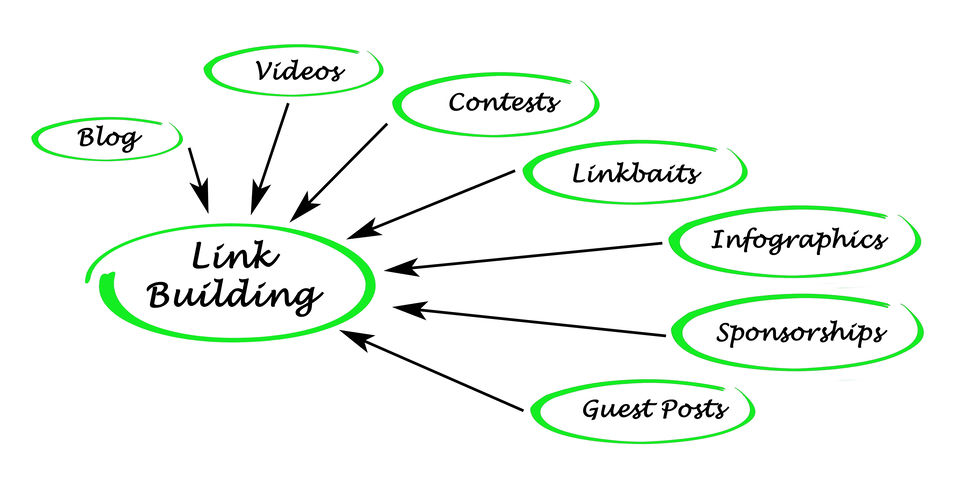
In the B2B marketplace, a polished and professional website is one of the most important factors in building a corporate presence. Even with new leading technologies, like mobile and voice-first technology, a website is the gateway to creating a positive first impression and the platform for customer interaction. That’s why it is essential to design an easy to find, search-engine optimized website. In fact, 51% of online traffic arrives at websites via organic search.
We’ve talked about the importance of SEO and the terms every marketer needs to know to understand it. Additionally, one emerging website strategy to implement is link-building, which can drive search traffic, develop new audiences and create positive connections with your target market.
What is Link-Building?
To understand link-building, it’s important to know how search engines work and how they rank websites. A search engine like Google consists of a bot (referred to as a crawler), an index and an algorithm. The crawler follows links from web page to web page. When Google’s crawler finds a website, it reviews and analyzes the site’s content. It finds more pages through links it can find or “crawl to.” This includes pages on a website or to and from other websites. This content is indexed and processed through the search engine’s algorithm, which determines its ranking.
Crawlers imitate the way a reader may consume information. The longer a crawler stays on your website, the more content can be analyzed and indexed, and therefore the more likely your website will show up in search engine results. Link-building is the act of creating a network of links so both a crawler and potential customers can continue browsing your website.
Keys to Successful Link-Building
There are many methods and best practices to use when it comes to link-building. Whether you’re developing a new website or are an SEO veteran, here are six ideas to help you create and maintain a strong link-building strategy.

- Provide a clear and thorough site menu. The menu bar on your website consists of the most important pages for your visitors. It should lead them to the information you want them to know about your company, credentials, products and services. Many websites utilize accordion menus, or secondary menus, to organize multiple links under a category. Bottom bar menus that lead to other most-used links are another great way to route readers (and crawlers) toward more information.
- Create content topic clusters. A term coined by Hubspot, topic clusters are groups of interlinked pages that center around a pillar page of broad subject material and then divide content into smaller, more defined and in-depth topics on separate pages. Utilizing this structure helps to keep content organized and easy for visitors to find. It also creates a network of links for search engine bots.
- Use textual links within content. There are many opportunities for link-building within content. Include textual links in blogs, articles, testimonials, announcements and press releases to link back to your own related content or provide additional information. Linking out to other websites also is a useful practice to build a network and become a valuable resource to new audiences.
- Provide suggested material and or a call-to-action. It’s a good practice to provide a short list of similar and relevant material at the end of each blog or article. These lists help readers find more information, answer questions, or provide visitors an opportunity to sign up for notifications that keep them informed about your company’s news and events. A call-to-action link can also help a user find contact information, request a quote or create another avenue to guide them through the sales funnel.
- Invite mutual links and guest content. Outside of links on your own website, building links on other websites can be a great way to boost SEO and website traffic. Linking out to other websites without a mutual arrangement can still position your content as a resource and encourage linking-back naturally. However, you can be proactive in your link-building and contact other firms or content resources about sharing mutual links, or guest blogging for each other’s websites. This networking exposes your organization to new audiences in addition to creating another path for SEO.
- Ensure old content is linked to and broken links are removed. It’s a common mistake to let old content go stale. However, old articles, blogs, news and white papers are extremely valuable to a content strategy. Optimize evergreen content to keep it relevant and incorporated in your website’s link network. This can help content compound views over time and become a known resource to search engines. Remove or correct broken and incomplete links to ensure readers and search engine crawlers don’t hit a dead end.
SEO Imitates Engagement

While SEO is important to increase the traffic to your website, remember search engine crawlers are meant to imitate the engagement of readers. By building links and creating avenues for users to stay on your website, you invite them to explore your company’s expertise and foster more engagement. This builds your brand’s credibility—a significant factor in B2B purchase decisions. When you use these tips, you will more likely become a known resource to prospects and naturally increase the ROI of your website.
